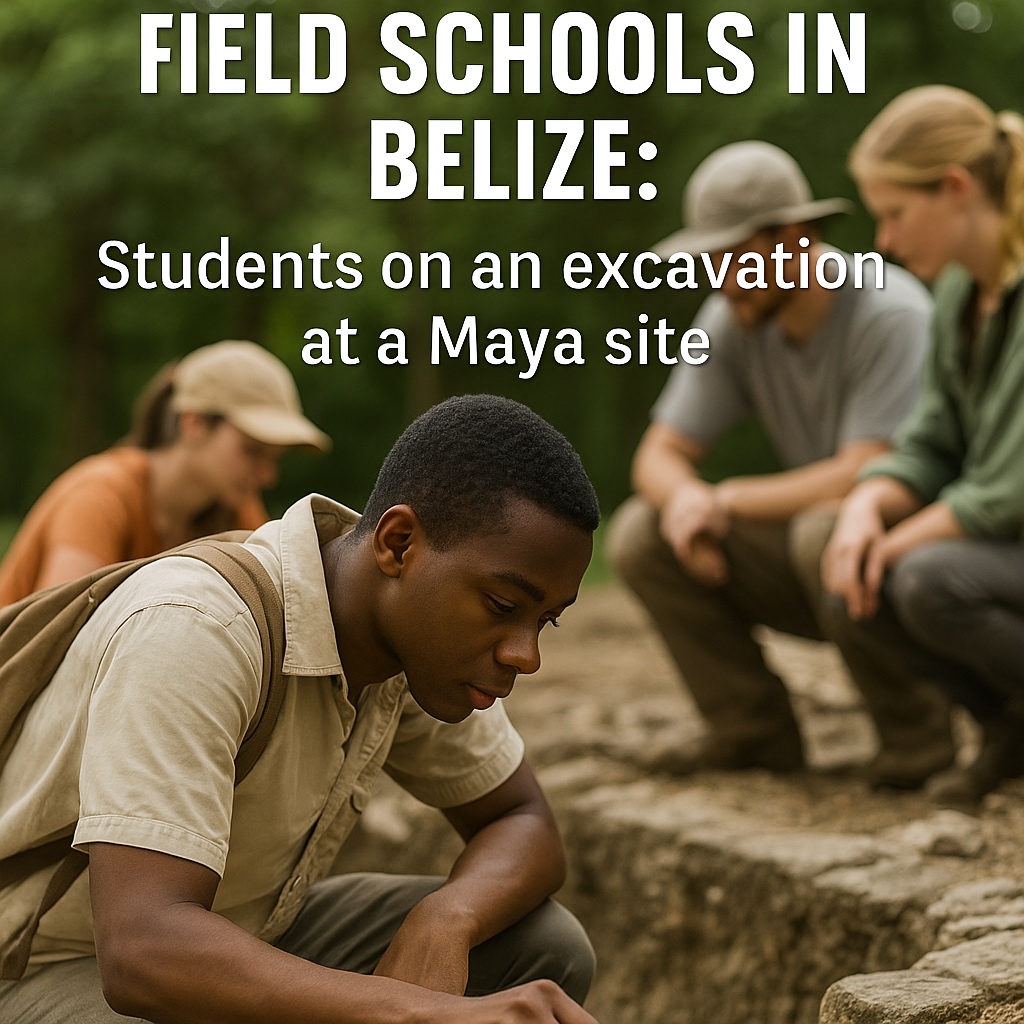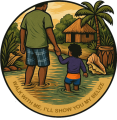Archaeology Field Schools in Belize: Where the Maya World Becomes Your Classroom
We talk about the ruins. Sometimes we talk about the big discoveries — a royal tomb at Xunantunich, a jade mask at Altun Ha, or laser mapping at Caracol. But we almost never talk about the ongoing archaeology that makes all of this possible.
The plazas you walk today, the temples that rise from the jungle, even the pathways cleared for visitors — none of it would exist without the work of archaeologists and students in the field schools of Belize. Past projects gave us the ruins we know. Current ones are still uncovering new chapters. And the future depends on the next generation learning here in Belize, every summer.
This post is my way of honoring those programs — the quiet, patient work behind the headlines, and the reason I can bring you to Maya ruins today.
Why Belize is a Global Classroom for Archaeology
- Heart of the Maya world — thousands of known sites, many still unexcavated.
- English-speaking country — easier for international students to adapt.
- Partnerships — Belize’s Institute of Archaeology works closely with universities.
- Community connection — most projects aren’t just research; they involve nearby villages, local workers, and Belizean archaeologists.
- Living landscape — here, ruins aren’t sealed off; they sit beside rivers, farms, and forests, part of everyday life.
When you come here to study, you aren’t only uncovering the past — you’re learning from the present.
Major Field Schools & Research Projects
Valley of Peace Archaeology (VOPA)
- Location: near Belmopan.
- Focus: community archaeology, protecting at-risk sites.
- Run by Dr. Lisa Lucero (University of Illinois).
- Duration: six weeks, with scholarships sometimes available.
Learn more through the University of Illinois’ official page .
Rio Bravo Archaeology Field School (RBAS)
- Location: Rio Bravo Conservation Area, northern Belize.
- Partner: University of Texas at Austin.
- Training: excavation, survey, lab analysis.
- Credit: 3–6 academic credits, or audit for experience only.
Details are listed at the Belize Archaeology Field School site
Programme for Belize Archaeology Project (PfBAP)
- University: Cal Poly Humboldt, led by Dr. Fred Valdez.
- Area: northwestern Belize rainforest.
- Training: survey, excavation, artifact cataloguing.
- Known for long-term impact in Rio Bravo.

University of North Carolina Wilmington (UNCW) – Ambergris Caye
- Site: coastal Maya settlements on Ambergris Caye.
- Duration: six-credit course.
- Unique: studies island archaeology, often overlooked compared to inland ruins.
Course details appear on the University of North Carolina Wilmington anthropology department website
University of New Hampshire – Crooked Tree Field School
- Short program (three weeks).
- Directed by Dr. Eleanor Harrison-Buck.
- Focus: both Archaic hunter-gatherer and Maya sites near the Belize River.
- Base: Crooked Tree village, where wetlands meet archaeology.
Dos Hombres Archaeological Project (DHAP)
- Host: Elon University, directed by Dr. Rachel Trachman.
- Research: excavation, mapping, soil studies.
- Combines archaeology with ecology and daily Maya life.
Actuncan Excavations (IFR Global)
- Site: Actuncan in the Belize Valley.
- Credits: 8 semester / 12 quarter credits.
- Duration: 4+ weeks, directed by Dr. David Mixter.
- Students work on monumental and residential excavation.
Belize Valley Archaeological Reconnaissance (BVAR)
- One of the longest-running projects in Belize (since 1988).
- Directed by Dr. Jaime Awe and international partners.
- Sites: Cahal Pech, Baking Pot, Lower Dover.
- Famous for shaping much of what we know about the Belize Valley.
Ka’Kabish Archaeological Research Project (KARP)
- Location: near Lamanai.
- Run by Trent University.
- Focus: settlement and trade research.
- Students stay in Indian Church village, close to the Lamanai site.
The Hidden Side of Archaeology in Belize
Most of these programs are full every summer, yet outside of academic newsletters or university websites, you rarely hear about them. They don’t get travel blog coverage. They aren’t marketed like tours.
And yet:
- A post on Reddit’s AskArchaeology showed students actively asking for advice on which Belize program to join.
- Listings on study abroad sites show travelers “currently viewing” these Belize programs.
- Research papers even note that the average Belize field school costs around $3,000–$4,000 (plus airfare) — making affordability one of the biggest challenges for students.
So yes, people are looking. They’re searching. But unless you know the right channels, you’d never find out that Belize is one of the world’s busiest archaeological classrooms.
Why This Matters for Belize
For me, archaeology here isn’t just about stones and ceramics. It’s about memory. When students dig at Cahal Pech, they’re working just a few miles from where I grew up walking the riverbanks. When projects excavate in Valley of Peace, they’re doing it alongside communities who carry Maya roots in their daily lives.
Belize doesn’t freeze its history in a museum. Our history lives in our rivers, forests, and hills. These field schools are proof of that — they keep uncovering what the land has carried for thousands of years.
Closing
Tourism stands on the shoulders of archaeology. Without the field schools and research projects, Belize would be nothing but jungle mounds. Because of them, we can walk into plazas, climb temples, and tell stories that connect past to present.
The famous discoveries have already made their mark. But the ongoing work — the students mapping at Actuncan, the community digs in Valley of Peace, the steady summer projects at Dos Hombres and BVAR — that’s the heartbeat that keeps the Maya story alive.
So when you visit a ruin with me, you’re not only seeing ancient Maya history. You’re also standing in the middle of living archaeology — past, present, and future, all layered in Belize.
Walk with me, and I’ll show you not just the ruins — but the work and the people who make sure the story never ends.

